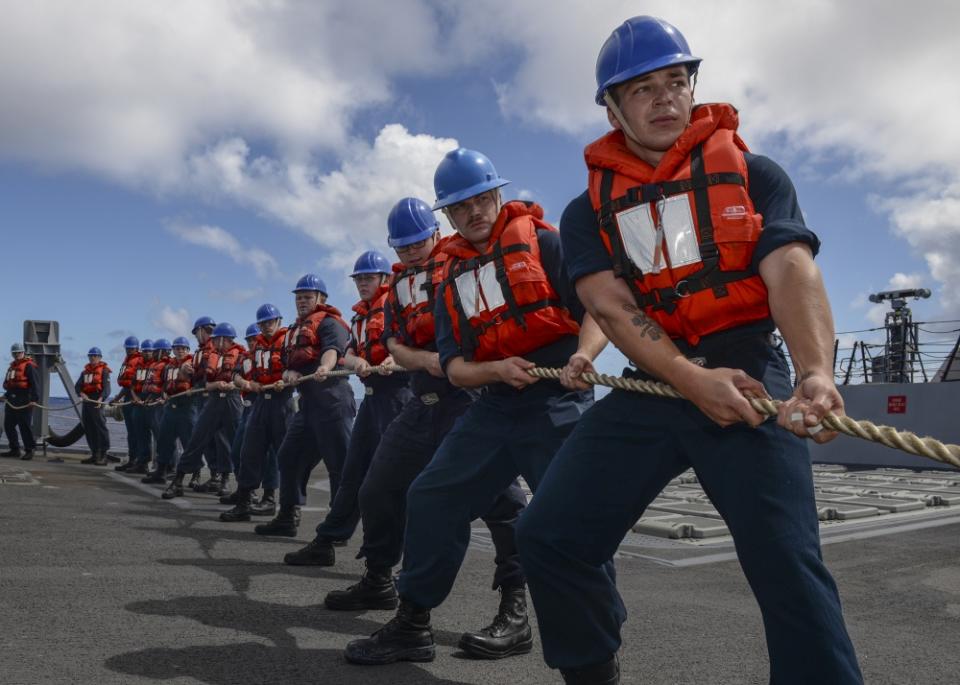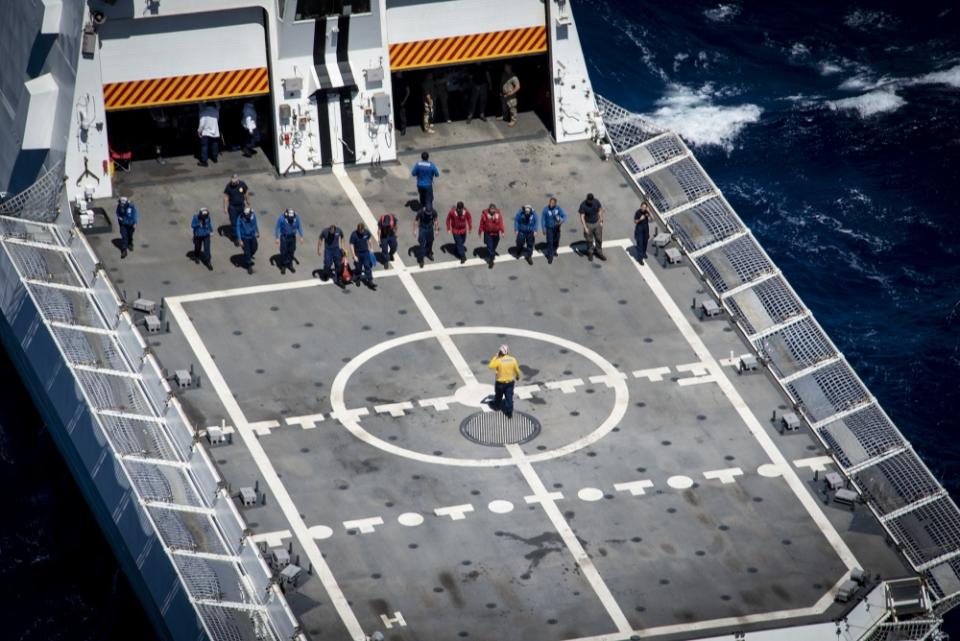The United States has stepped up pressure against China in the Pacific Ocean. Two U.S. Navy ships recently sailed through the Taiwan Strait. The move comes as the U.S. holds naval exercises off the coast of California and Hawaii with allies and partners.
China was disinvited from participating in the event because of Washington’s objections over Chinese activities in the South China Sea.
CGTN’s Nathan King reports from Honolulu, Hawaii.
It’s perhaps not a surprise that China isn’t in Honolulu for the RIMPAC exercises this year. Last December, a new U.S. national security strategy was unveiled which labeled China and Russia as competitors. Ever since, the U.S. has stepped up patrols in the South and East China Seas, often sailing close to Chinese claimed territory.
Last weekend’s passage of U.S. Navy ships through the Taiwan Strait was also seen as provocative by Beijing. Beijing also questions the legitimacy of so-called “freedom of navigation” (FON) operations in the South China Sea. Analysts are seeing a distinct shift in U.S. actions.

Sailors assigned to guided-missile destroyer USS Sterett (DDG 104) heave the messenger line during a replenishment-at-sea with Royal Canadian Navy supply ship NRU Asterix during Rim of the Pacific (RIMPAC) exercise on July 9, 2018. (U.S. Navy photo by Mass Communication Specialist 3rd Class Alexander C. Kubitza/Released)
“The Trump administration has already shown more of an emphasis and more of a commitment to freedom of navigation operations. There has been a higher number and the tempo has increased,” Denny Roy of the East-West Center in Honolulu said. “We can expect more of that and probably generally speaking more of a U.S. push for security cooperation with allies in the region.”
At the Rim of the Pacific exercises, the U.S. is focused on relationships with its Pacific and Indian Ocean allies in a show of regional force. Earlier this year, the name of the Pacific Command was changed to the U.S. Indo-Pacific Command.
India and the Indian Ocean are very much part of the evolving U.S. strategy. Indian commanders, while happy to work more closely with the U.S. and its allies, don’t want to be drawn into what could be seen as an anti-China coalition.

Cmdr. Ryan Davis, Patrol Squadron (VP) 47 Executive Officer, shakes hands with service members from the Indian Navy on Hickam Air Force Base flight line before boarding an Indian Navy P-8A Poseidon on Joint Base Pearl Harbor-Hickam during Rim of the Pacific (RIMPAC) Exercise on July 08, 2018. (U.S. Navy Photo by Mass Communication Specialist 1st Class Kevin A. Flinn/Released)
“Definitely they are not our enemy. So we are looking at having freedom of navigation in the area, the way they are operating we would like to operate and 70-percent of the earth is available for all of us. So if 30-percent of the land is being taken care of by so many millions of army people, we are very few and we can enjoy our coexistence in these waters,” INS Sahyadri Naval Commander Amit Kumar Sinha said.
However, fears of a potential anti-China coalition are growing. There is a renewed, U.S. emphasis on something called the Quad. It’s a Japanese idea from 2007 that brings four nations (the U.S., Japan, Australia and India) into a security dialogue. It was largely abandoned after a few years. But since 2017, the discussions have resumed, and that worries Beijing.

The crew of the USCGC Bertholf (WMSL 750) inspects the flight deck July 11, 2018, approximately 16 miles west of Honolulu prior to a medical evacuation exercise in support of RIMPAC 2018. on July 11, 2018. (U.S. Coast Guard photo by Senior Chief Petty Officer NyxoLyno Cangemi/Released)
The recent visit to China by U.S. Secretary of Defense James Mattis was intended to diffuse tensions .Observers have said that while U.S. military strategy may have shifted, U.S. policy toward key, Chinese security interests has not.
“I do think overall that the competition is relatively restrained. The U.S. has not changed its policy for example regarding Taiwan or the South China Sea. The U.S. still doesn’t take a position on who owns what and still upholds a one China policy,” Timothy Heath of the RAND Corporation said.
China, however, remains wary. The Trump administration has questioned many, long-standing U.S. foreign policies. If a fundamental shift occurs over Taiwan or the South China Sea, competitors could become combatants.
Sam Zhao discusses the symbolism and messaging within RIMPAC
CGTN’s Mike Walter spoke to Sam Zhao about the subtext behind the RIMPAC exercises. Zhao is the Director of the Center for China-U.S. Cooperation at the University of Denver.
 CGTN America
CGTN America


